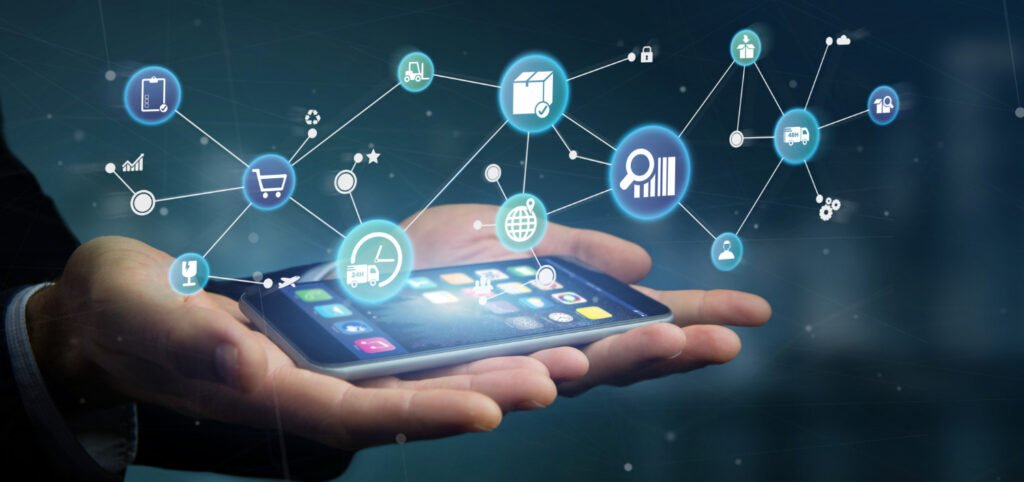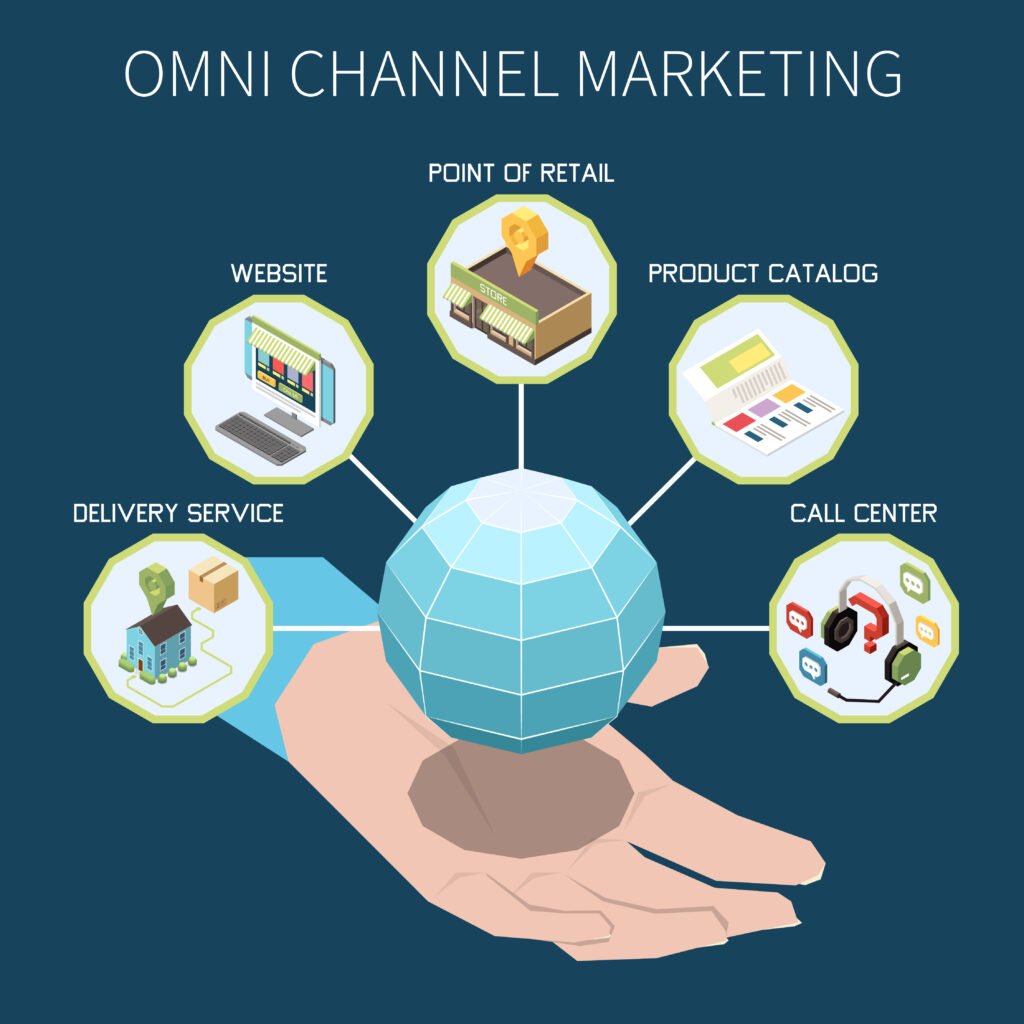Omnichannel Marketing in Industry 5.0
- Home
- Omnichannel Marketing in Industry 5.0

Omnichannel Marketing in Industry 5.0
The Fifth Industrial Revolution, or Industry 5.0, is a new and developing stage of industrialization in which humans collaborate with cutting-edge machinery and robots with artificial intelligence to improve business operations. This is combined with a stronger emphasis on the needs of people, more resilience, and a better understanding of sustainability.
This new phase, which extends beyond manufacturing and builds on Industry 4.0, is made possible by technological advancements in the areas of artificial intelligence, automation, big data analytics, the Internet of Things (IoT), machine learning, robotics, smart systems, and virtualization.
Expanding on the ideas behind Industry 4.0, the European Union states that this new industrial revolution offers “a vision of industry that aims beyond efficiency and productivity as the sole goals and reinforces the role and contribution of industry to society.”
The EU’s description of Industry 4.0’s approach, which “places the wellbeing of the worker at the centre of the production process and uses new technologies to provide prosperity beyond jobs and growth while respecting the production limits of the planet,” highlights an important distinction between these two approaches.
This represents a change from an emphasis on economic worth to a more inclusive idea of societal value and welfare. The idea of putting people and the earth before profits creates a new focus for industry, even though it has previously been discussed, for example through Corporate Social Responsibility. To develop a wider viewpoint than that of Industry 4.0, the concept of Industry 5.0 expands beyond the realm of industry to include all organizations and business strategies.
The Industrial Revolution’s Evolution (Industry 1.0 to 5.0)
The First Industrial Revolution started in the 18th century, and during the following centuries, as technology and methods improved, it underwent five iterations.
Industry 1.0
- This first revolution, which started around 1780, concentrated on industrial output using steam- and water-powered machinery.
Industry 2.0
- This second industrial revolution took place in 1870, around 100 years later. It was powered by electrical and involved mass production using assembly lines.
Industry 3.0
- A further 100 years later, in 1970, we reach Industry 3.0, which was characterized by automation brought on by electronic and computer technology. This was made better by globalization (Industry 3.5), which involved shifting production to low-cost nations.
Industry 4.0
- We are currently experiencing the fourth industrial revolution, which is based on the idea of digitalization and encompasses several technologies such as automation, artificial intelligence (AI), connected devices, data analytics, cyber-physical systems, and digital transformation. Our FAQ has further information about Industry 4.0.
Industry 5.0
- With an emphasis on how people and machines may work together, the fifth industrial revolution is now underway. Workers are free to provide clients with value-added tasks thanks to personalization and the use of collaborative robots. In addition to improved resilience, a human-centric strategy, and an emphasis on sustainability, this most recent edition goes beyond manufacturing procedures, which we discuss in more detail below.

Advantages of Industry 5.0
Cost Optimization
- Since the First Industrial Revolution, innovations have led to more efficient procedures, and Industry 5.0 capitalizes on those advancements. Since man and machine collaborate to make the best financial decisions for a business, industry 5.0 represents the pinnacle of business models that utilize the fewest resources to produce the most profits.
Greener Solutions
- Environmental preservation has not been prioritized in any of the industrial revolutions. With Industry 5.0, this pattern is shifting due to new corporate technology and sensitivities. This has caused the establishment of sustainable policies where, for instance, reduced waste generation and its management become crucial, cross-cutting processes that also increase the effectiveness of the organization.
- This change is in response to what governments, international organizations, and consumers have been progressively demanding.
Personalization and Creativity
- Industry 5.0 is the development of higher-value employment that provide customers with more customization options and employees with enhanced design freedom. Human workers can spend more time providing better, customized services and goods by allowing manufacturing procedures to be handled by automation.
- Industry 4.0 started this, but Industry 5.0 takes it a step further by enhancing automation and providing feedback to establish a service-based paradigm that allows people to concentrate on providing value to end users.
- Businesses also become more agile and adaptable while also having a good impact on society as a result of the increasing focus on sustainability and resilience, as opposed to merely reducing any bad consequences.
What is Omnichannel Marketing?
Omnichannel marketing is the integration and cooperation of the various channel’s organizations use to interact with consumers, with the goal of creating a consistent brand experience. As customers go down the sales funnel, omnichannel marketing enables a more significant customer experience by integrating branding, message, and online and offline touchpoints seamlessly.
Marketing strategies are viewed through the lens of the consumer in omnichannel marketing. Customers can now communicate with brands through a vast array of platforms, including social media and customer service lines.

By providing a few essential components listed below, an omnichannel strategy guarantees that the customer enjoys a satisfying, consistent experience across all channels:
- Recognizable, consistent brand tone and vision
- Personalized communication based on individual preferences
- Based on information gleaned from previous encounters and the present stage of the buyer’s journey
A recognizable brand makes it easier for consumers to identify it, and personalization based on interests and purchasing behaviour increases the likelihood that they will engage with branded content across channels.
How to Use Omnichannel Marketing in Industry 5.0?
It’s important to consider how a person interacts with your brand when designing an omnichannel experience. It concentrates on the overall experience rather than the channel. Considering this, there are a few prerequisites for developing an omnichannel experience:
Data Collection
- Implementing an omnichannel strategy requires quick, precise data collection about your customers. With the aid of such data, you will be able to comprehend how and when your target market prefers to contact with companies, as well as the devices they prefer to use, the messaging they respond to best, the features and items they need, etc. An omnichannel strategy’s main inspiration will come from this data.
- The tools for collecting this data across online and physical channels must be in place for brands. Unified Marketing Measurement (UMM), an attribution model that integrates the person-level metrics of multi-touch attribution with the historical, aggregate data of media mix modelling, is a clever approach to accomplish this.
- This allows for the incorporation of both individual preferences and historical trends, such as geographical or seasonal factors that influence engagements and conversions, into touchpoints.
Data Analysis
- Data collection is just the beginning. It is pointless without a team and a platform that can transform all this huge data into useful insights. To address consumers’ requirements right away, brands must implement an analytics platform that can compile all this data in almost real-time, allowing teams to course-correct while campaigns are running.
Customer Journey Mapping
- Organizations should be careful to establish customer journey maps for each of their audience segments prior to launching an omnichannel campaign.
- The steps performed between a customer discovering a brand and making a purchase from that brand are evaluated by the customer journey map. By outlining these maps, brands can design more individualized campaigns by considering customer preferences, the user interface and experience, and external variables like the economy that may have an impact on the path to purchase.
Brand Identity & Guidelines
- Establishing a brand identity with precise and clear guidelines for messaging and creative is crucial for organizations. To promote brand visibility and recognition through a consistent message, these standards should be followed across all mediums. Utilizing brand tracking tools to assess and forecast their brand’s health in the eyes of consumers is another approach for businesses to support an omnichannel experience.
Testing & Optimization
- Testing the effectiveness of your omnichannel plan on a regular basis is one of the most crucial elements of an omnichannel marketing strategy. The marketing team can use this information to find ways to optimize campaign spending, messaging, creativity, and other factors. Organizations nowadays should make use of media planning tools that can perform “what if” scenarios that consider budget, target audience, numerous KPIs, and media mix, resulting in a very realistic media plan that can maximize ROI and guide future decision-making.
Sectors Using Omnichannel Strategies
As consumers become more empowered, omnichannel strategies have gained popularity throughout businesses; however, they are especially prevalent in the following sectors:
Retail:
- In the current omnichannel world, retail has undergone major transformations. Retail marketers must centralize how customers are interacting with their brand across an array of channels given the option to buy in-store or online as well as the rise of social media and review sites to ensure that the outcome is favourable.
Healthcare:
- Customers of healthcare providers typically interact with a variety of touchpoints, including hospitals, primary care, and medications. Healthcare providers may better serve consumers, giving them the information that matters most to them, while reducing potential health concerns, by analysing data about the customer journey and engagements.
Automotive:
- Since buying a car is a long-term investment, auto dealerships and manufacturers place a high value on brand awareness and fostering client loyalty. Today’s commercials might not have the expected results right away, but if they bring in prospects and keep current customers engaged, they will eventually affect sales. But even in the automotive industry, the purchase process has transformed, with 80% of consumers doing their car research online first. It is now more important than ever to have a comprehensive advertising plan that engages customers across all touchpoints.
Financial Services:
- From a mindset focused on products to one that is more customer-centric, the banking and financial services sector is evolving. Companies must think about how to provide personalized experiences so that they may learn which of the numerous services and products would be the greatest fit for each user based on their unique tastes, wants, and needs.
Recent Trends In Omnichannel Marketing
As omnichannel becomes more popular, several trends have evolved that can assist make these initiatives more successful to raise customer satisfaction and increase marketing ROI. These are as follows:
Integration of In-Store and Online:
- Many consumers buy online before picking up their items from physical stores. This could be done to avoid paying delivery fees or hunting for things in stores. Consumers of today anticipate that their online and in-store experiences will be as seamless as possible.
- Nearly 70% of US consumers anticipate receiving a confirmation of their purchase’s readiness within two hours of placing an online order.
- After realizing this trend, Destination XL merged inventory information with customer location data to assist customers in finding what they were looking for online and picking it up in-store.
- Additionally, retailers like Kohl’s have constructed parking spaces specifically for customers picking up online items.
Focus on the Brand, Not the Channel:
- The Forrester Report: “Retailers are Starting to Reap the Rewards of Omnichannel Commerce” states that “Customers assume they are engaging with one cohesive brand or business, irrespective of the different touchpoints they engage.
- This means that retailers must assure the consistency of information and resources across digital and in-store touchpoints, or else they run the risk of losing customers to competitors who do. Regardless of platform, brands must maintain a consistent identity with messages that speak to their target audience across all platforms.
More Devices for a Single Purchase:
- Customers commonly start their shopping journey on one device and complete it on another. However, because it can be challenging to consider all cross-device interactions, many businesses are having trouble addressing this aspect of the consumer journey. Your business’s financial line and your efforts to optimize your media expenditure could be severely harmed if you fail to take this change in trends into consideration.
Multiple Channels Lead to Better Customers:
- When properly tracked, customers who use multiple devices to access your website are generally better customers who spend three to four times as much as those who use just one channel.
Conclusion
- The proper message may be sent to customers at the right moment with an omnichannel marketing strategy. Organizations can offer a consistent customer experience that considers earlier touchpoints along the customer journey by utilizing omnichannel marketing. This not only helps to build brand awareness among customers, but it also improves engagement, boosts revenue and sales, and improves customer loyalty.
- With the use of sophisticated marketing performance measurement tools, businesses in Industry 5.0 can more easily provide consumers with an omnichannel experience. These platforms can provide trustworthy, person-level information to find the ideal media mix, targeting, and other factors. Organizations may improve campaign optimization and cut down on unnecessary ad spending by studying the customer’s journey at every stage.
- Share
